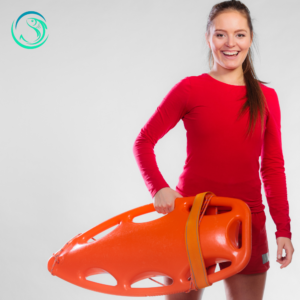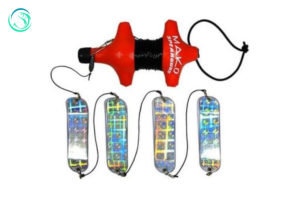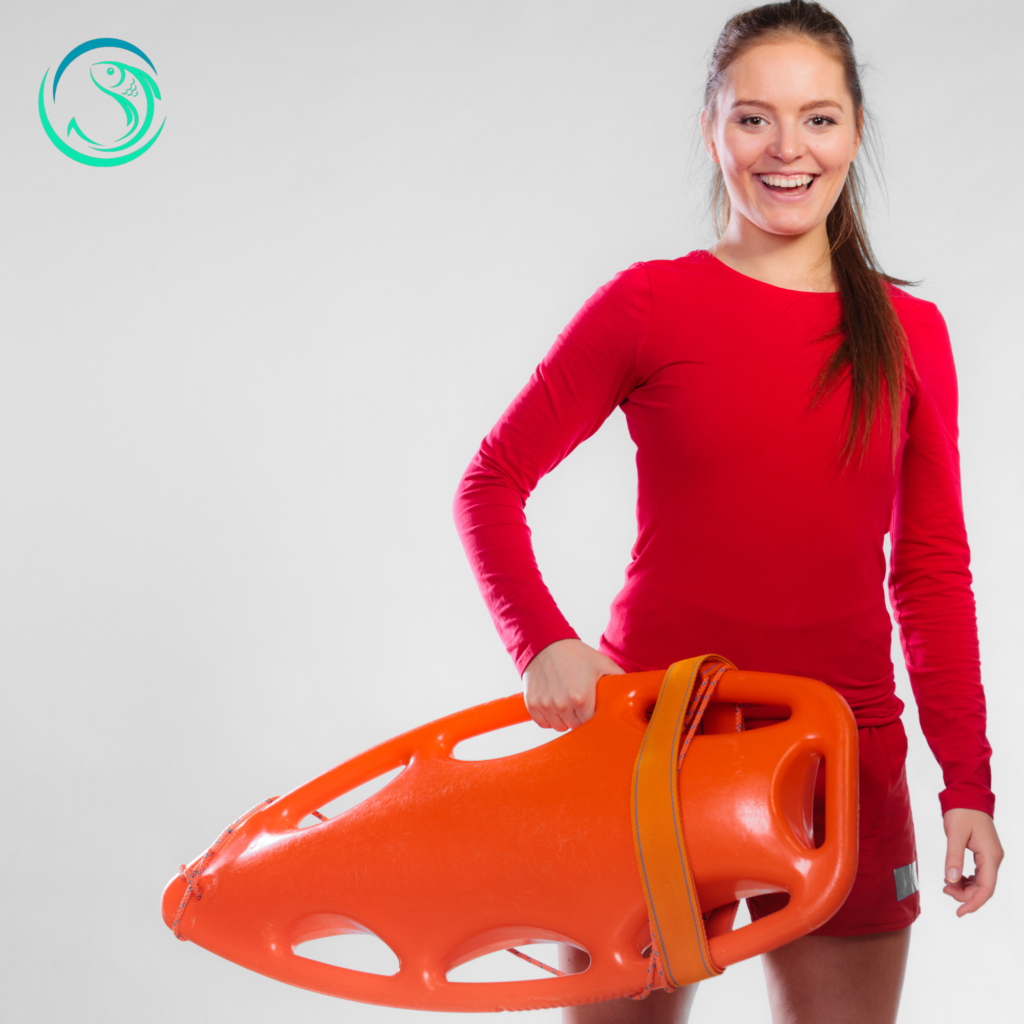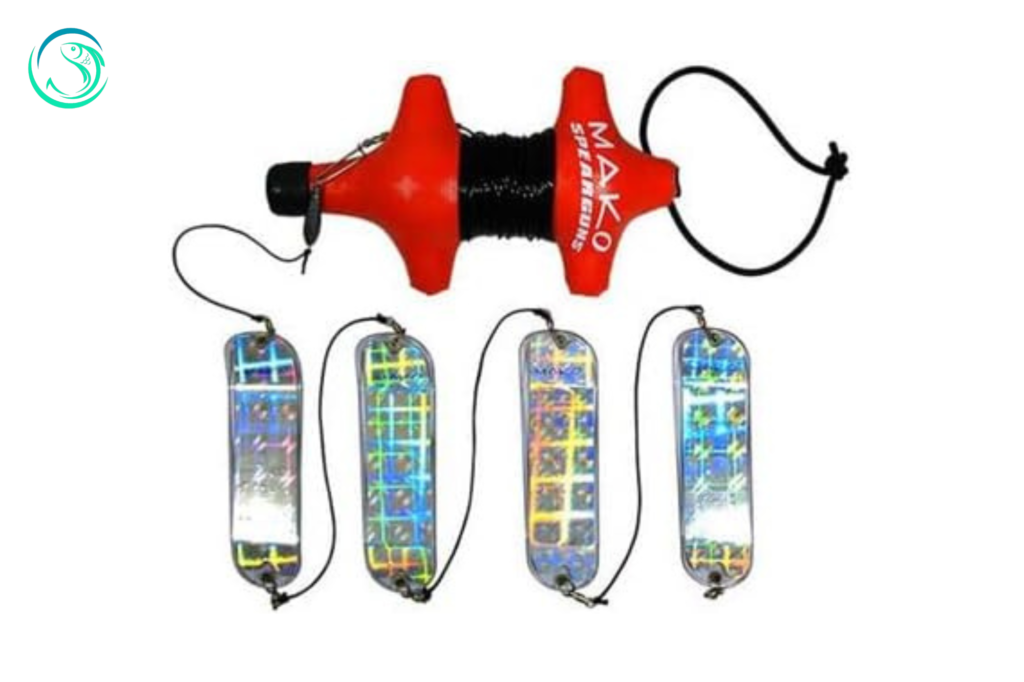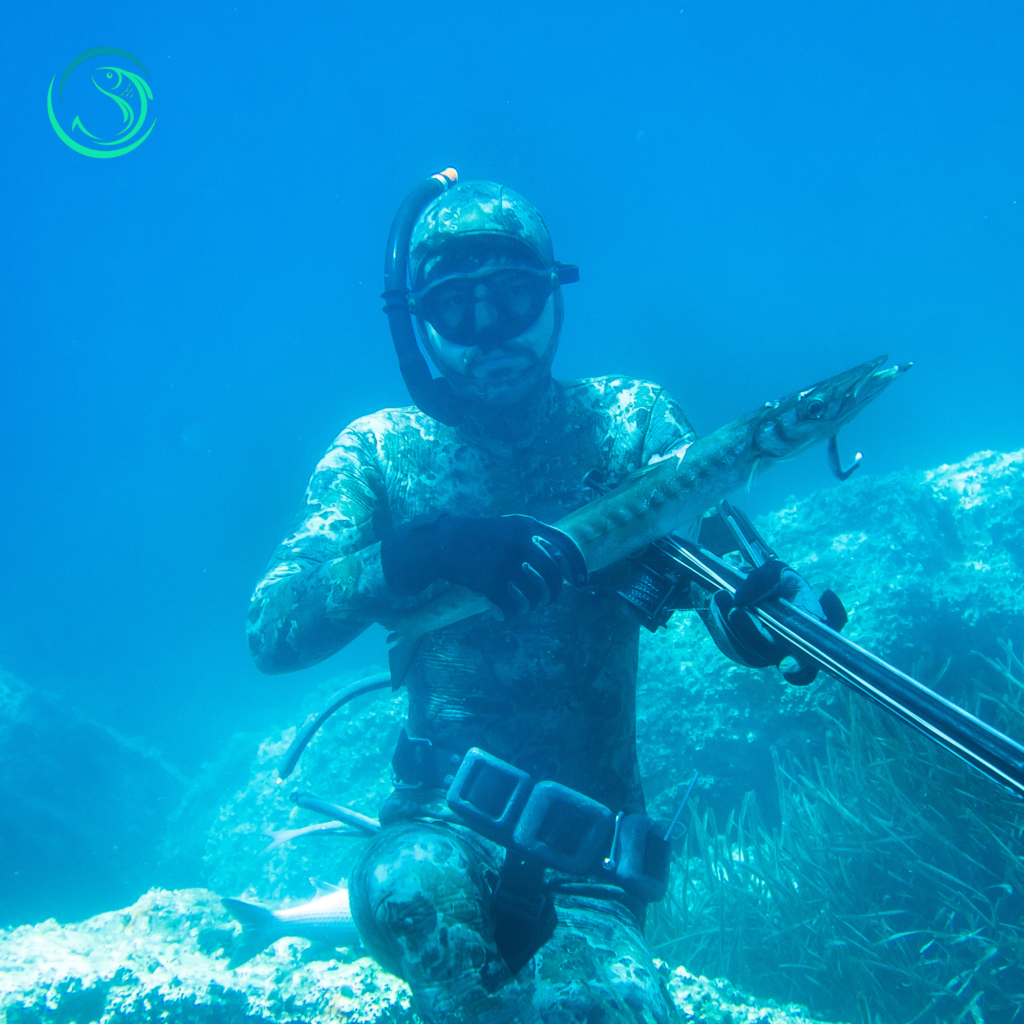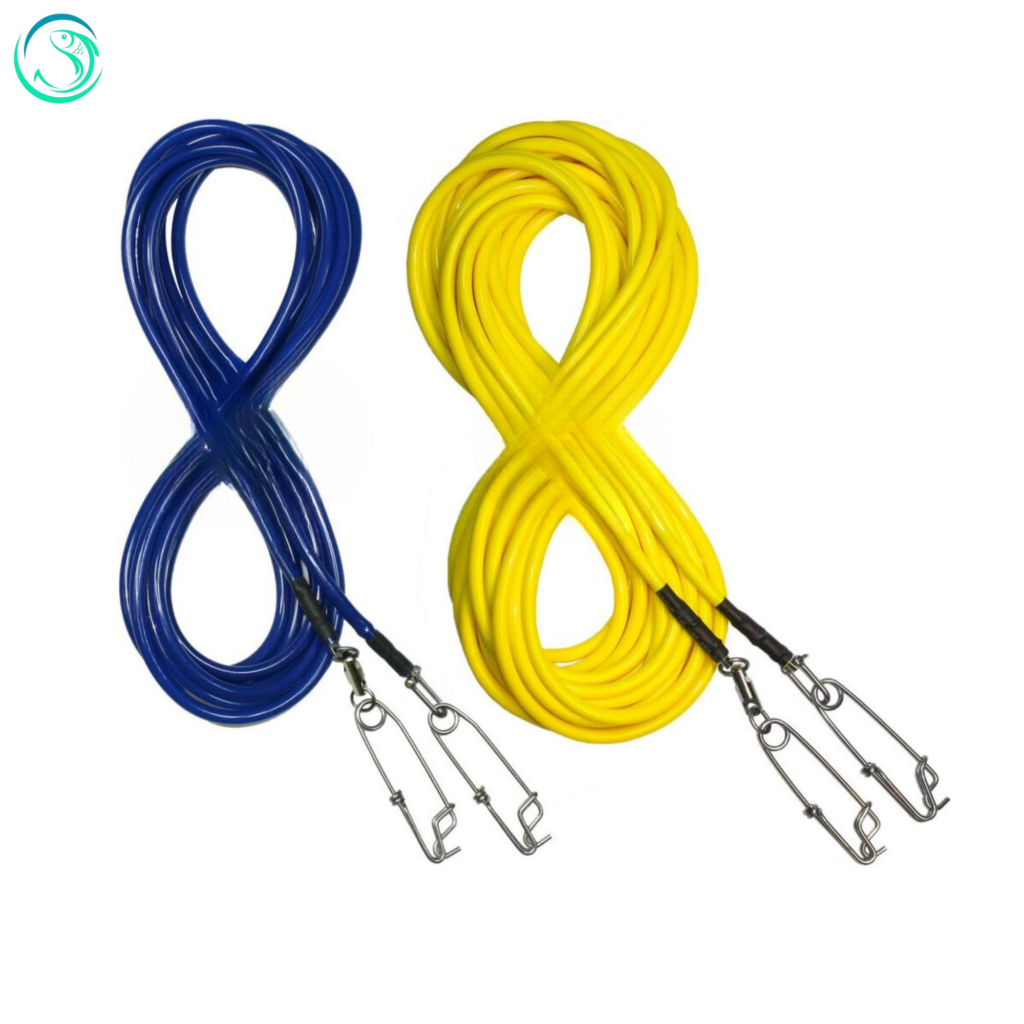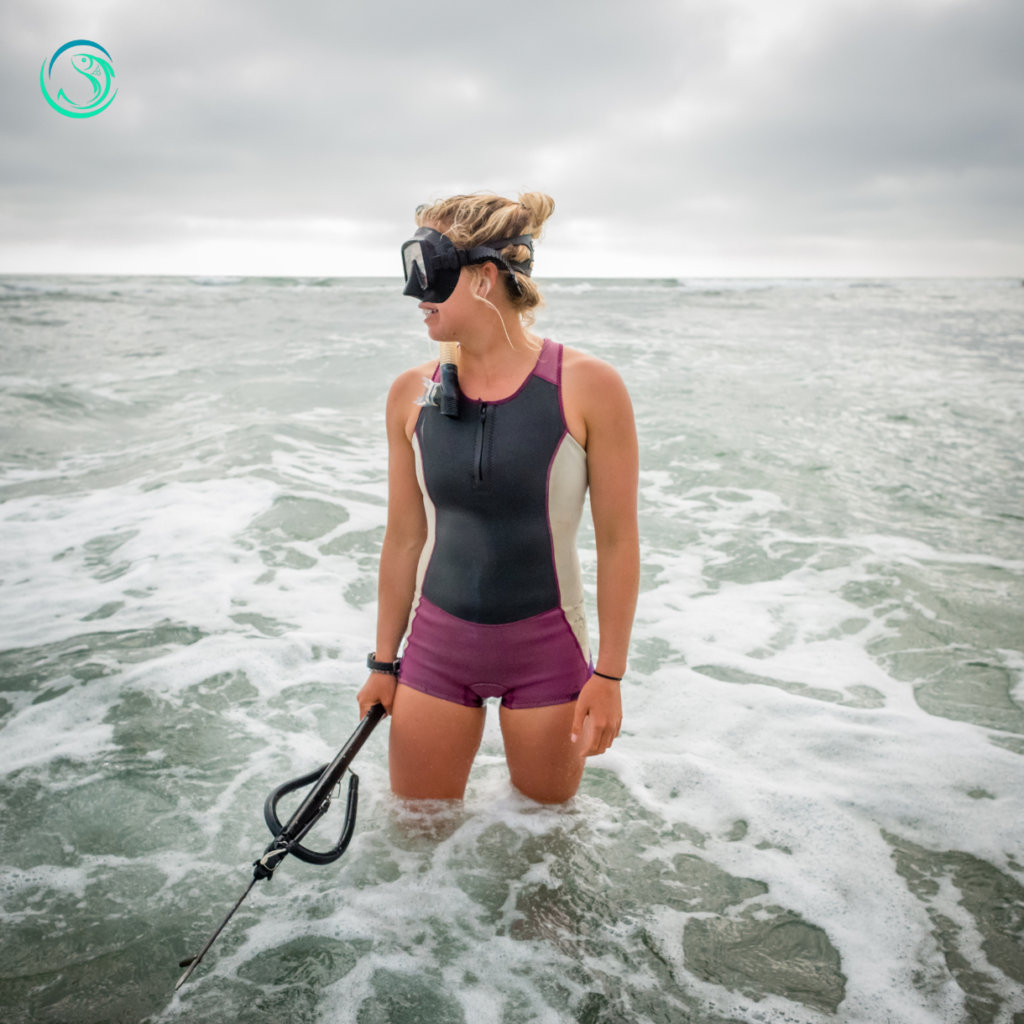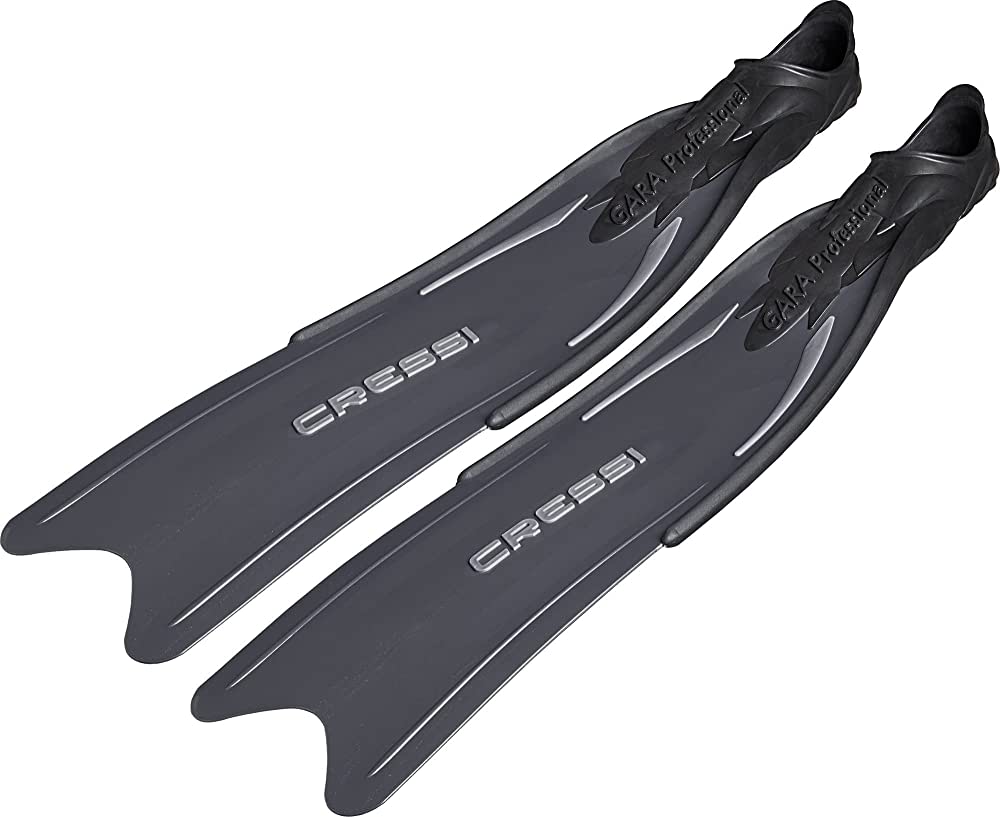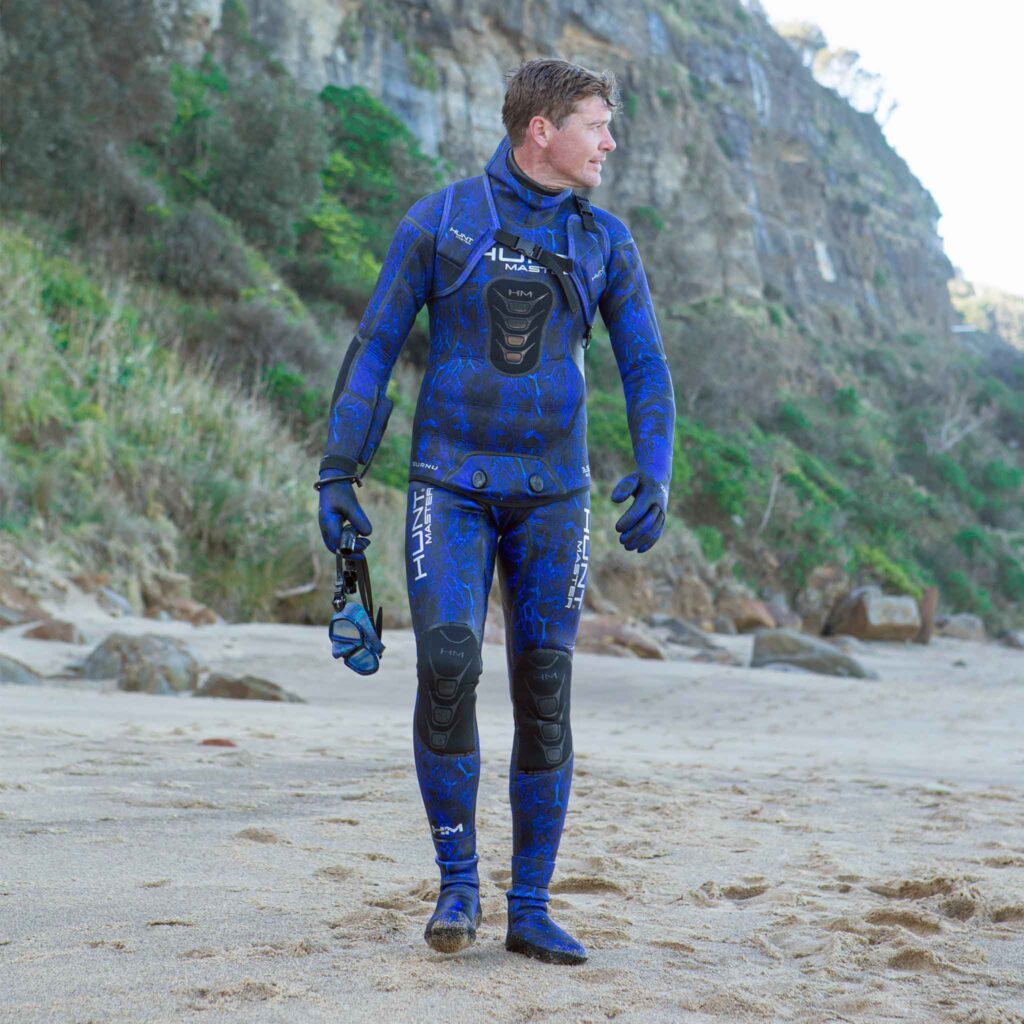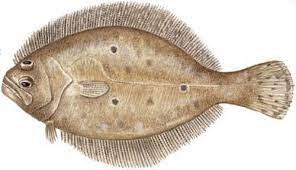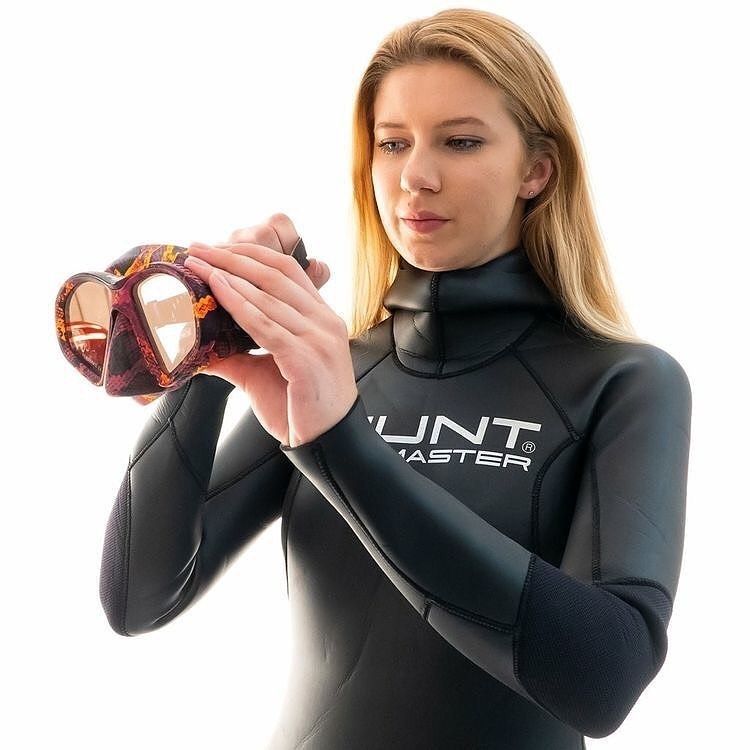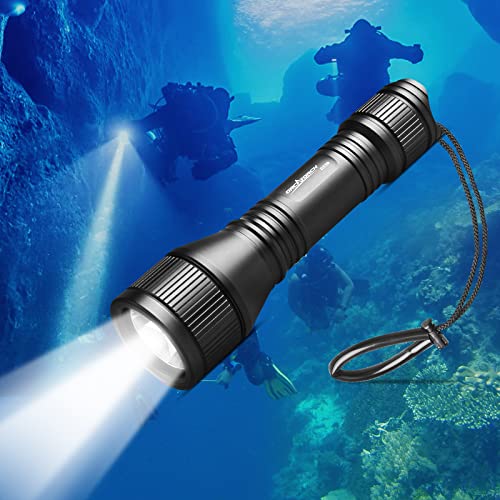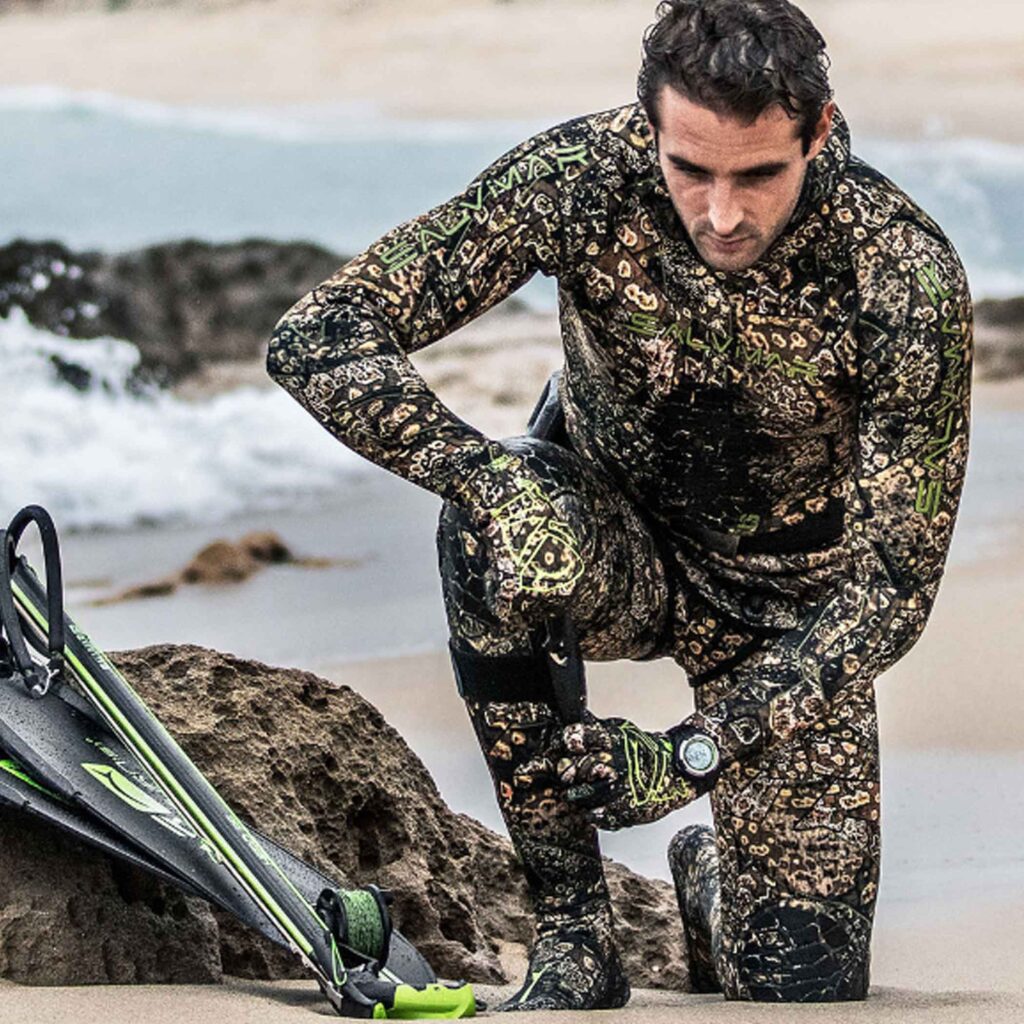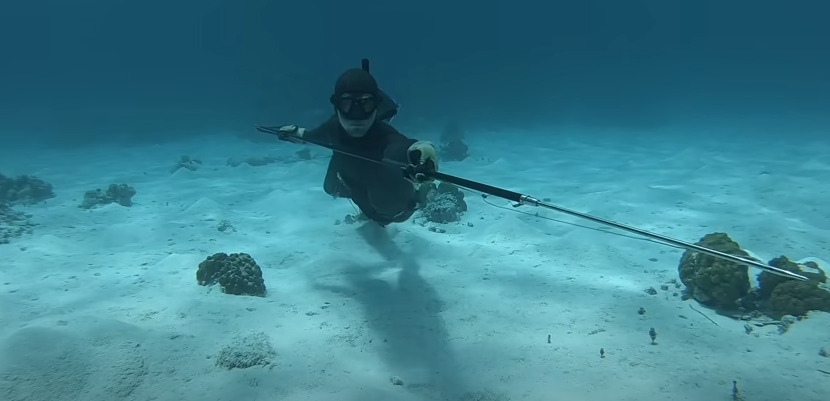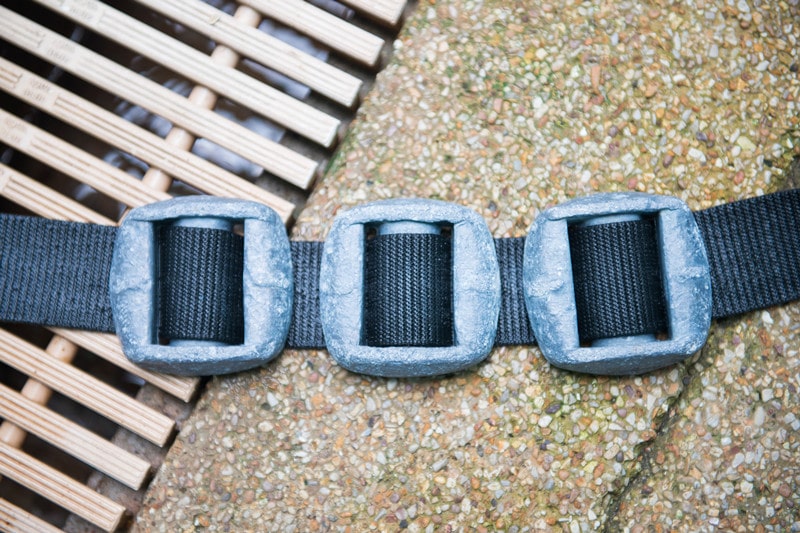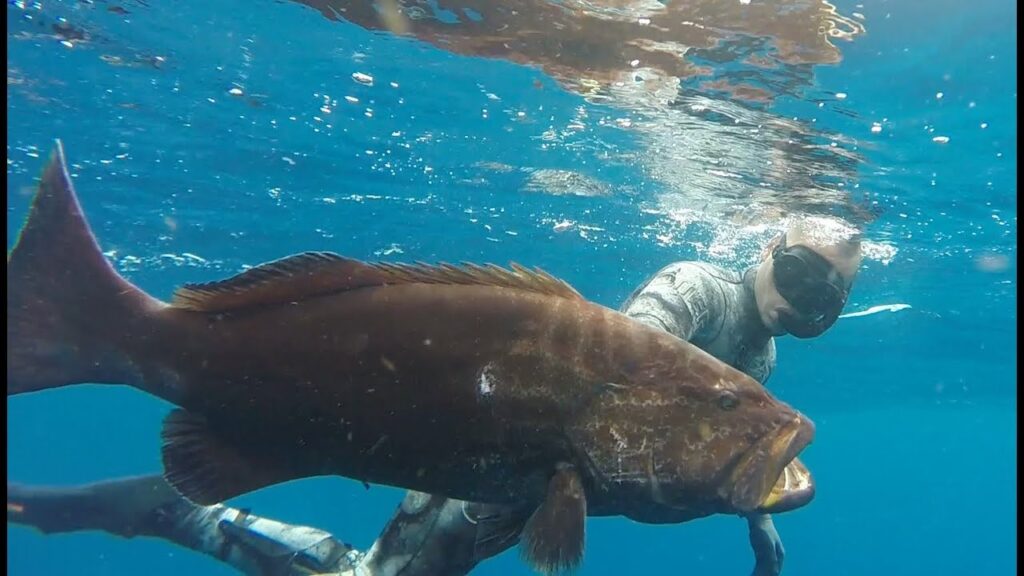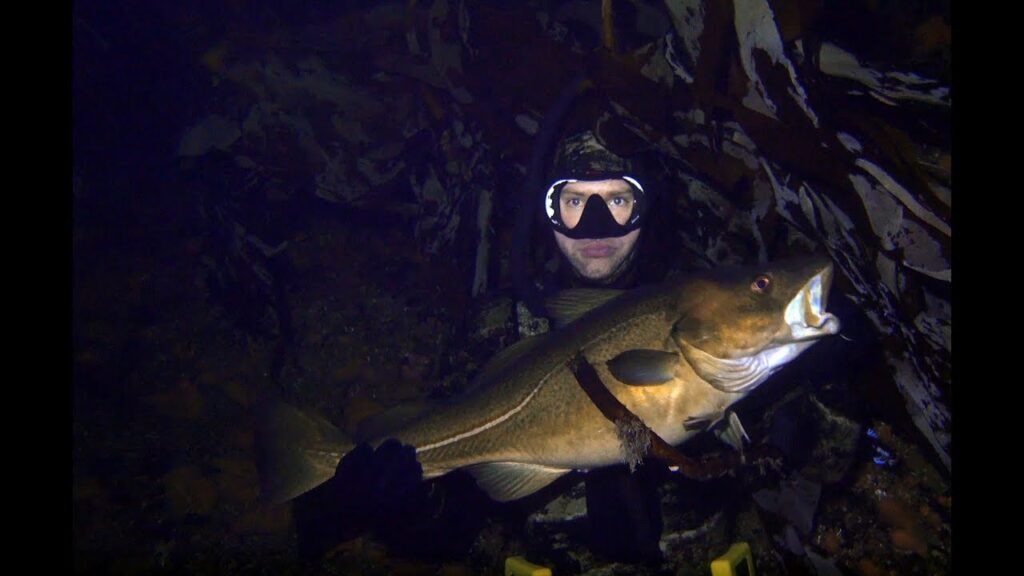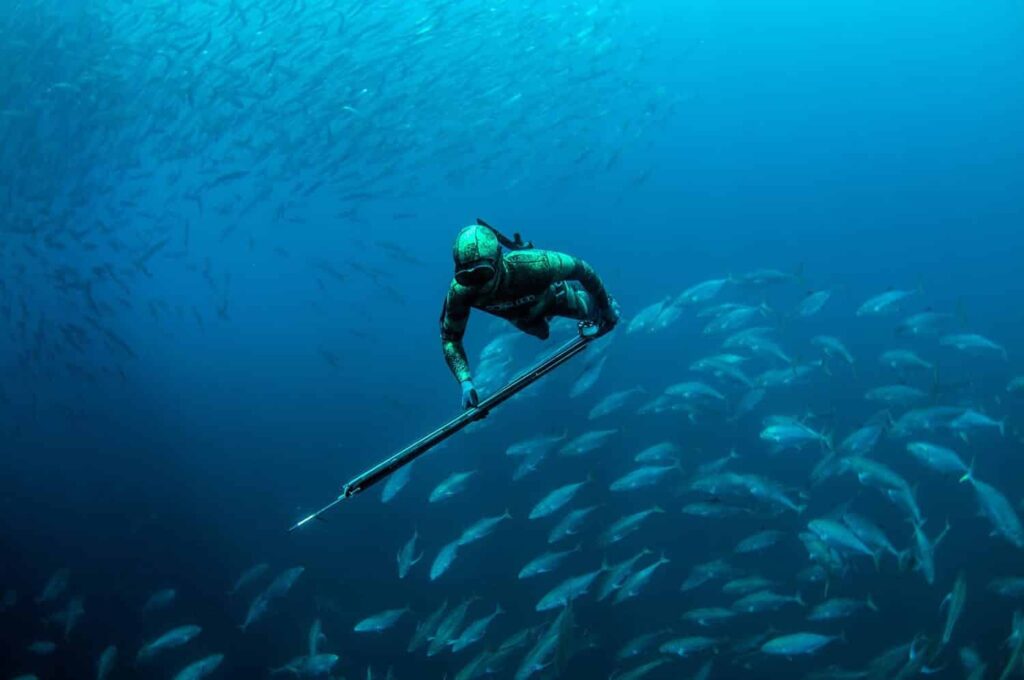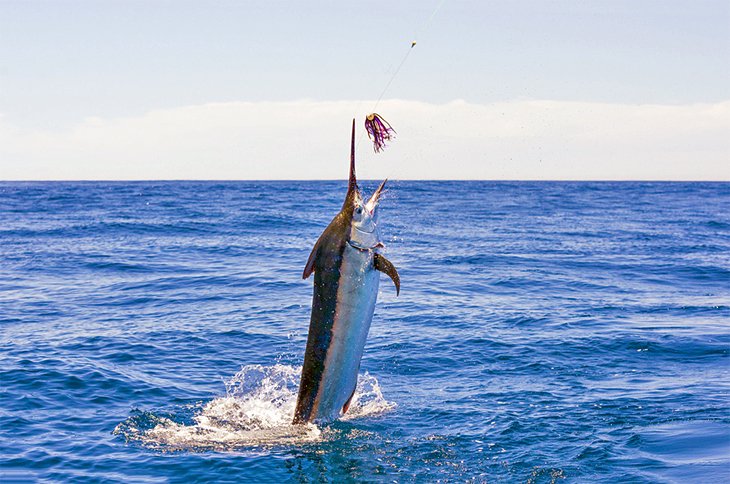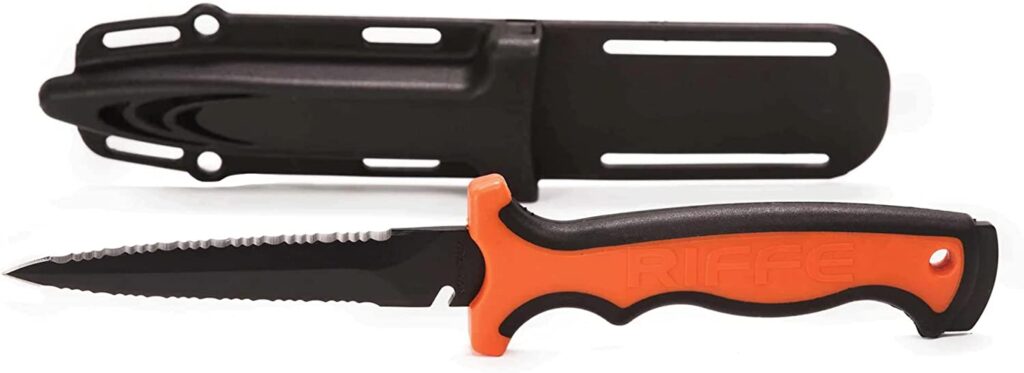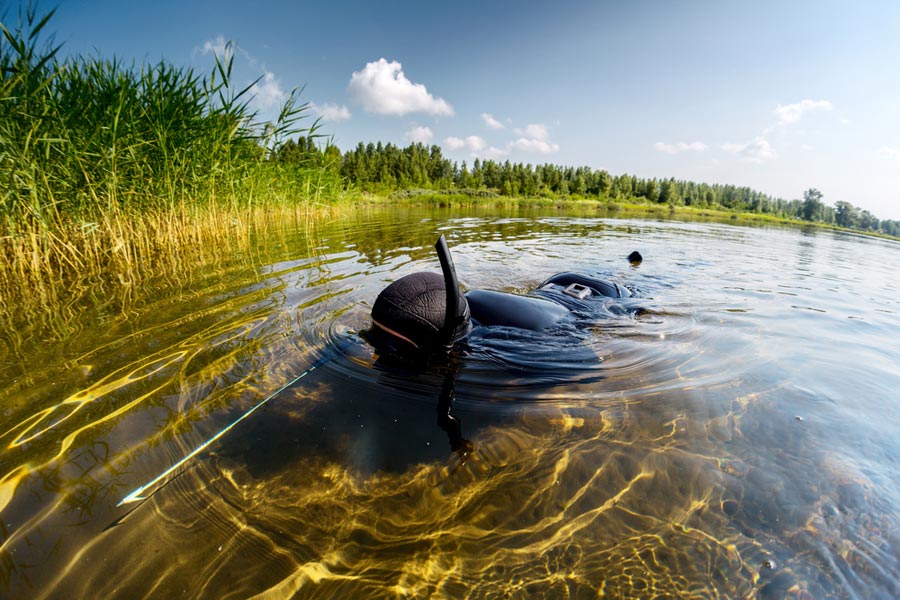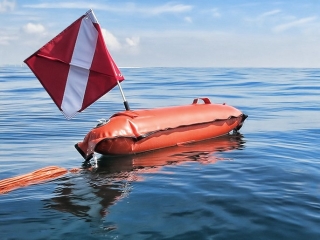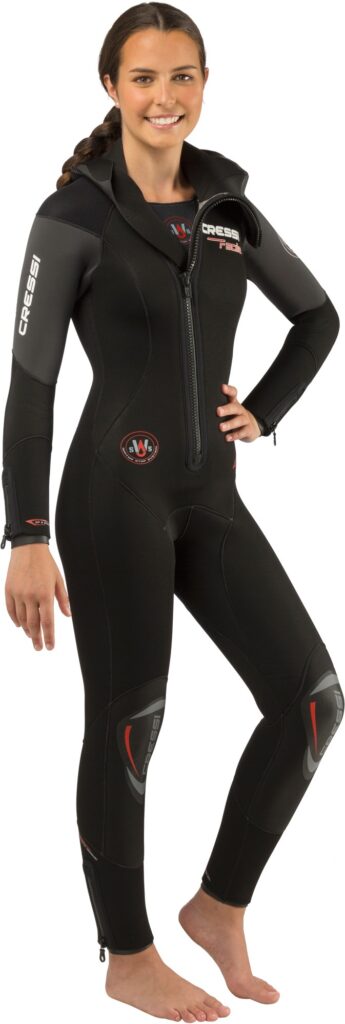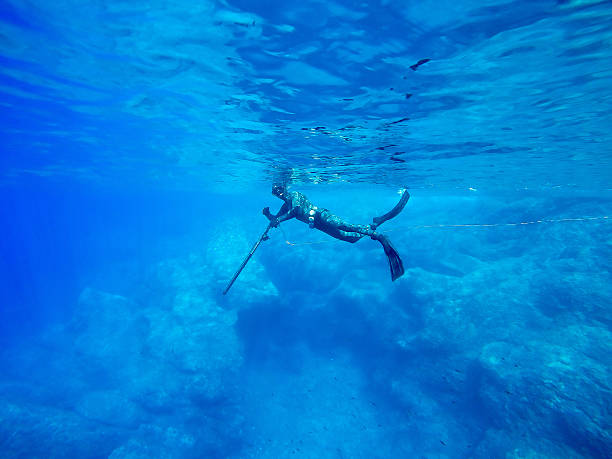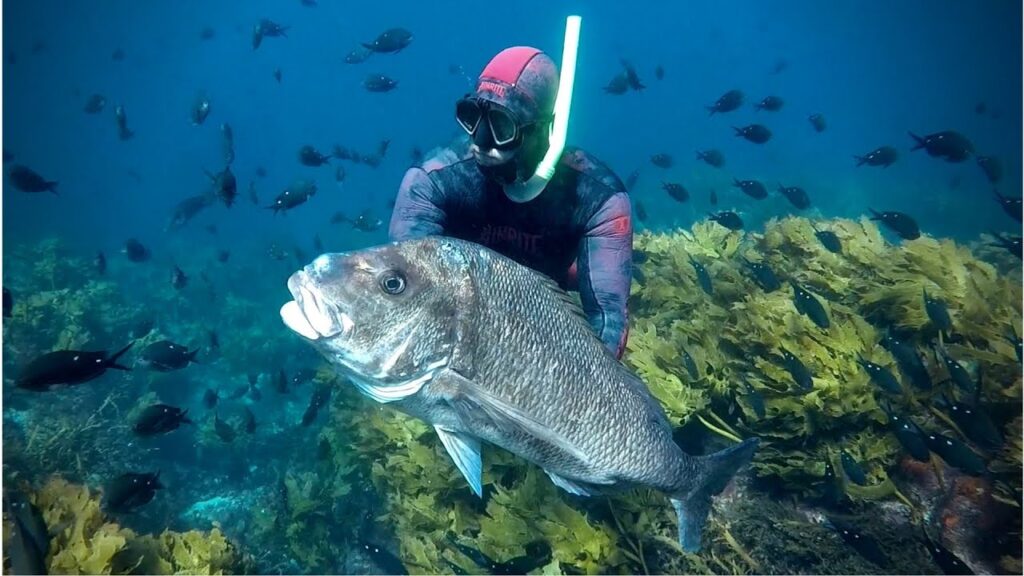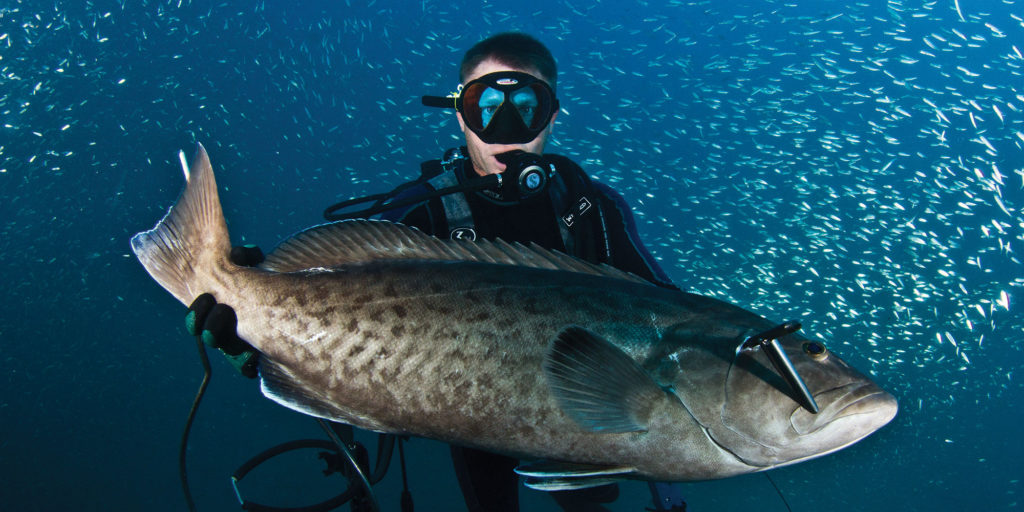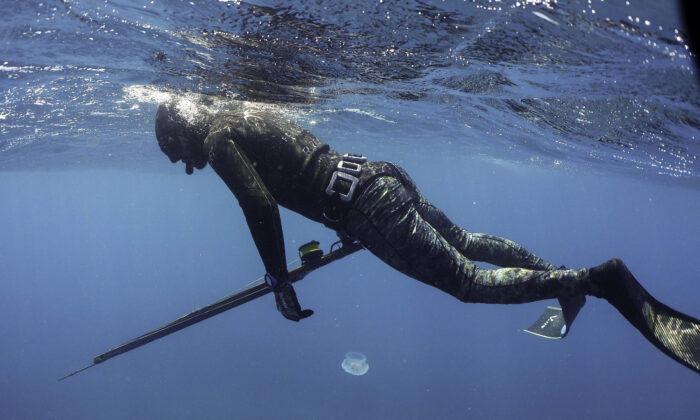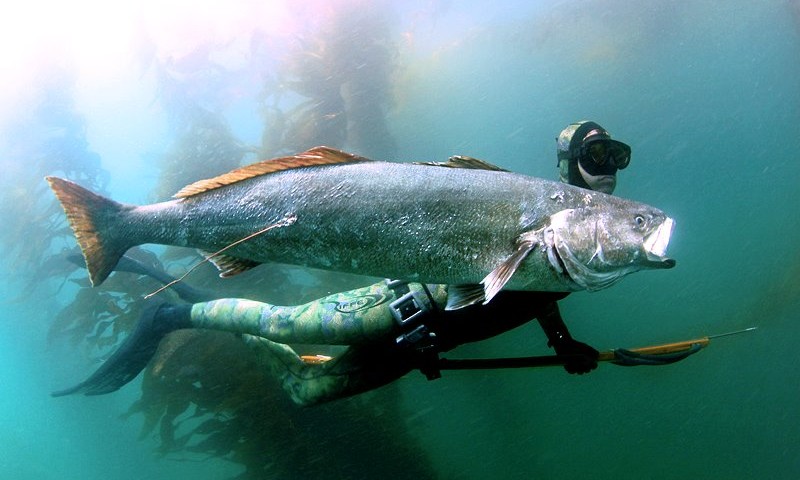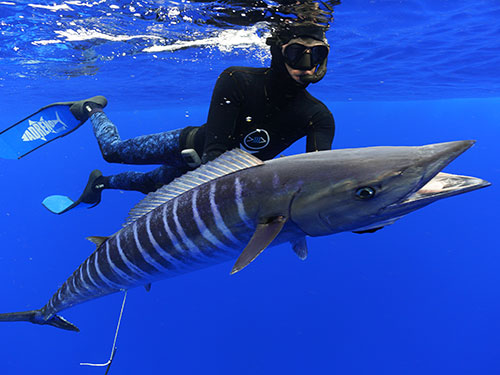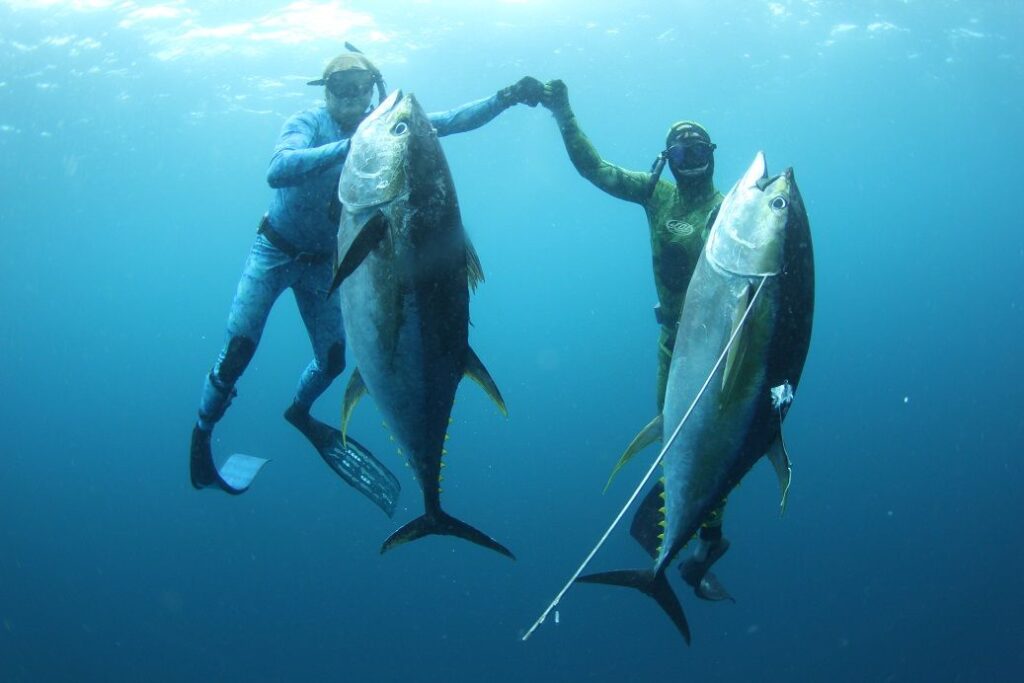Are you an avid spearfisher looking to upgrade your gear? You can’t go wrong with high-quality spearfishing knife!
A spearfishing knife serves a variety of purposes in the sport, from dispatching fish to cutting rope and line.
Let’s dive into the world of spearfishing knives and explore all the information you need to choose the perfect one for you. From blade material and design to handle material and size, I’ve got you covered.
So grab your wetsuit, and let’s get started!
Introduction to spearfishing knife
Definition and purpose of dive knives
A spearfishing knife is a specialized tool used in the sport of spearfishing. It is typically worn on the diver’s leg or attached to their diving gear. It is used for a variety of purposes.
You can kill a fish with a spearfishing knife by cutting through its spine or its gills. This ensures a quick and humane death for the fish.
Spearfishing dive knives can also helpful to cut through rope, line, and other debris that may be encountered while diving. You can also use it as a tool for defense against predatory marine animals.
In addition to their practical uses, spearfishing knives also serve as a personal item of identification for the diver.
Spearfishing dive knives often have unique patterns or features that aid in identifying the owner when separated from their dive group.
Types of spearfishing diver knives
There are several different types of dive knives with their own unique features and design. Here are some common types of spearfishing knives:
- Fixed blade: A fixed blade spearfishing knife has a blade that is permanently attached to the handle. These knives are generally more durable and easier to clean than folding knives. But they may be more difficult to carry around due to their larger size.
- Folding blade: A folding blade spearfishing knife has a blade that you can fold into the handle when not in use. These knives are more compact and easier to carry than fixed blade knives, but they may not be as sturdy or durable.
- Line cutting: A line cutting spearfishing knife is designed specifically for cutting through ropes, lines, and other debris. These knives often have saw-tooth design on the blade to help them easily cut through tough materials.
- Dive shears: Dive shears are a type of spearfishing knife that is specifically designed for dispatching fish. They have a long, curved blade and a handle with a gripping surface, making it easy to hold onto when wet.
- Multipurpose: A multipurpose spearfishing knife is a versatile tool that can perform a variety of tasks. These tasks include dispatching fish, cutting line, and serving as a tool for defense. These knives are often made with a combination of blade types, such as a straight edge for cutting and a serrated edge for sawing.
Ultimately, the type of spearfishing dive knife depends on your specific needs and preferences as a diver.
Choosing the right spearfishing knives
Factors to consider when selecting a diving knife

There are several factors to consider when selecting a spearfishing knife. Here are some key points to keep in mind:
- Blade material and design: The material and design of the blade are important factors to consider when choosing a spearfishing knife. Common blade materials include stainless steel, titanium, and high carbon steel. Each material has its own set of benefits and drawbacks, so it’s important to choose one that meets your specific needs.
- Handle material and design: The handle of the knife should be made of a material that is comfortable to hold and grip, even when wet. Common handle materials include plastic, rubber, and metal. The design of the handle is also important, as it should provide a secure and comfortable grip.
- Size and weight: The size and weight of the knife are important factors to consider, as you will be carrying it with you while diving. A larger knife may be more durable, but it may also be more cumbersome to carry around. On the other hand, a smaller knife may be more convenient to carry, but it may not be as sturdy or durable.
- Blade length and thickness: The length and thickness of the blade can affect the knife’s performance and durability. A longer blade may be more effective for certain tasks, such as dispatching fish, but it’s difficult to handle. A thicker blade may be more durable, but it may also be heavier and harder to sharpen.
- Sharpness and ease of sharpening: A sharp knife is essential for effective and safe use, so it’s important to choose a knife that can maintain a sharp edge. The ease of sharpening the blade is also an important factor, as you will likely need to sharpen the knife regularly.
- Price and durability: The price and durability of the knife should also be taken into account. A more expensive knife may be of higher quality and longer lasting, but it may not be the most budget-friendly option. On the other hand, a cheaper knife may not be as durable or effective, but it may be more affordable. Consider your budget and the intended use of the knife to find the right balance between price and durability.
Check out “Best Spearfishing Float“
Popular spearfishing dive knife brands and models
There are several well-known brands that offer high-quality spearfishing knives. Here is a brief overview of some popular brands and models:
- Rob Allen: Rob Allen is a popular brand that offers a range of spearfishing knives, including the Rob Allen Carbon Fiber Knife and the Rob Allen Stainless Steel Knife. These knives are made with high-quality materials and are designed for durability and effectiveness.
- Cressi: Cressi is a well-known brand in the diving industry and offers a variety of spearfishing knives, including the Cressi Gara Modular Carbon Knife and the Cressi Skorpion Knife. These knives are made with high-quality materials and have innovative designs that make them effective and easy to use.
- JBL: JBL is a well-known brand in the diving industry and offers a range of spearfishing knives, including the JBL Carbon Fiber Knife and the JBL Stainless Steel Knife. These knives are made with high-quality materials and are designed for durability and effectiveness.
- Riffe: Riffe is a popular brand that offers a range of spearfishing knives, including the Riffe Stainless Steel Knife and the Riffe Titanium Knife. These knives are made with high-quality materials and are designed for durability and effectiveness.
- Beuchat: Beuchat is a well-known brand in the diving industry and offers a range of spearfishing knives, including the Beuchat Marlin Carbon Knife and the Beuchat Marlin Stainless Steel Knife. These knives are made with high-quality materials and have innovative designs that make them effective and easy to use.
- Mares: Mares is a well-known brand in the diving industry and offers a variety of spearfishing knives, including the Mares EOS Carbon Fiber Knife and the Mares EOS Stainless Steel Knife. These knives are made with high-quality materials and are designed for durability and effectiveness.
- Oceanic: Oceanic is a well-known brand in the diving industry and offers a range of spearfishing knives, including the Oceanic Delta 4 Stainless Steel Knife and the Oceanic Delta 4 Carbon Fiber Knife. These knives are made with high-quality materials and are designed for durability and effectiveness.

Using and maintaining a spearfishing knife
Safety considerations when using spearfishing knives
Using a dive knife can be an important and effective tool for spearfishing. But it’s important to use caution and follow proper safety guidelines when handling one.
Here are some safety considerations to keep in mind when using a dive knife:
- Wear the knife properly: Be sure to wear the knife in a secure and easily accessible location, such as on your leg or attached to your diving gear. This will ensure that you have quick and easy access to the knife if you need it, but also prevent it from becoming a hazard to yourself or others.
- Handle the knife carefully: Always handle the knife with care, especially when it is sharp. Keep your fingers away from the blade and use a firm, controlled grip when using the knife.
- Use the knife for its intended purpose: Only use the knife for the tasks it was designed for, such as dispatching fish or cutting line. Do not use the knife as a tool for prying or applying excessive force, as this can cause the blade to break or become damaged.
- Keep the knife sharp: A sharp knife is essential for safe and effective use. So, be sure to regularly sharpen the blade as needed. A dull knife is more likely to slip or cause accidental injuries.
- Use caution when cutting through fish: When dispatching fish, be sure to cut through the spinal cord or gills to ensure a quick and humane death. Avoid cutting through the abdomen, as this can release harmful toxins into the water.
- Follow local laws and regulations: Be sure to familiarize yourself with any local laws and regulations regarding the use of spearfishing knives. And always follow them to avoid any legal issues.
By following these safety guidelines, you can safely use a spearfishing knife to improve your spearfishing experience.
How to properly store and transport spearfishing knives
Proper storage and transportation of your spearfishing knife is important to ensure its longevity and safety. Here are some tips for properly storing and transporting your spearfishing knife:
- Store the knife in a secure location: When not in use, store the knife in a secure location, such as a locked cabinet or a designated knife drawer. This will prevent accidental injuries and protect the knife from damage.
- Transport the knife in a protective case: When transporting the knife, be sure to use a protective case to prevent damage to the blade and handle. A hard-sided case is generally the best option, as it will provide the most protection.
- Keep the knife dry: Be sure to keep the knife dry when not in use to prevent rust or corrosion. If the knife becomes wet, dry it off thoroughly before storing it.
- Disconnect the knife from diving gear: When not in use, be sure to disconnect the knife from any diving gear, such as a weight belt or BCD. This will prevent the knife from getting damaged or lost while not in use.
By following these tips, you can ensure that your spearfishing knife is properly stored and transported, helping it to remain in good condition and ready for use when you need it.
Tips for maintaining and sharpening a spearfishing knife
Proper maintenance and sharpening of your spearfishing knife are important to ensure its effectiveness and longevity. Here are some tips for maintaining and sharpening your spearfishing knife:
- Clean the knife regularly: After each use, be sure to clean the knife thoroughly to remove any dirt, sand, or debris that may have accumulated on the blade or handle. Use a soft cloth and a mild soap solution to gently wipe down the knife, being careful not to damage the blade or handle.
- Dry the knife thoroughly: After cleaning the knife, be sure to dry it thoroughly to prevent rust or corrosion. Use a soft cloth to wipe down the blade and handle, and allow the knife to air dry completely before storing it.
- Oil the blade: To help prevent rust and corrosion, consider oiling the blade of the knife on a regular basis. Use a light oil, such as mineral oil or gun oil, and apply it to the blade using a soft cloth. Be sure to wipe off any excess oil before storing the knife.
- Sharpen the blade regularly: A sharp blade is essential for effective and safe use of the knife, so be sure to sharpen the blade regularly. There are a few different methods you can use to sharpen the blade, such as using a sharpening stone or a blade sharpener. Follow the manufacturer’s instructions for the best
By following these tips, ensure that your spearfishing knife stays in good condition and is ready for use when you need it.

Conclusion
A spearfishing knife is a specialized tool that is essential for many aspects of the sport. From dispatching fish to cutting line and rope, a high-quality spearfishing knife can make a big difference in your diving experience.
When choosing a spearfishing knife, be sure to consider factors such as blade material and design, handle material and design, size and weight, blade length and thickness, sharpness and ease of sharpening, price and durability.
Popular spearfishing knife brands include Rob Allen, Cressi, JBL, Riffe, Beuchat, Mares, and Oceanic.
To ensure the safety and effectiveness of your spearfishing knife, be sure to follow proper safety guidelines when using it and properly store and transport the knife when not in use.
Regular cleaning, drying, oiling, and sharpening can help to maintain the knife and keep it in good condition. By following these guidelines, use a spearfishing knife to enhance your spearfishing experience.
Pro Tip:
It’s always a good idea to test out a spearfishing knife before you buy it to ensure that it feels comfortable and easy to use.
Many sporting goods stores or dive shops will allow you to handle and test out different knives before making a purchase. This can give you a good idea of which knife is the best fit for you and your needs.
FAQs
What is a spearfishing knife used for?
A spearfishing knife is used for cutting rope, line, and other materials while spearfishing. It is also used for killing or stunning fish.
Is a spearfishing knife necessary?
It is not absolutely necessary, but it can be useful to have a spearfishing knife on hand while spearfishing, as it can come in handy for a variety of tasks.
What should I look for in a good spearfishing knife?
Some factors to consider when choosing a spearfishing knife include:
- Blade material,
- Blade length and shape,
- Handle material,
- Blade locking mechanism
What is the best blade material for a spearfishing knife?
Stainless steel is a popular choice for spearfishing dive knives because it is corrosion-resistant and holds an edge well. Other options include titanium and high carbon steel.
How long should the blade be on a spearfishing knife?
A blade length of around 4-6 inches is a good general-purpose size for a spearfishing knife.
What shape should the blade be on a spearfishing knife?
A spearfishing knife typically has a straight or slightly curved blade. A straight blade is good for general cutting tasks, while a slightly curved blade is better for filleting fish.
What is the best handle material for a spearfishing knife?
A handle material that is durable, non-slip, and comfortable to grip is important for a spearfishing knife. Options include rubber, plastic, and wood.
Should I get a spearfishing knife with a sheath?
A sheath can be useful for carrying and storing a spearfishing knife, but it is not necessary.
How do I sharpen a spearfishing knife?
To sharpen a spearfishing knife, you will need a sharpening stone or honing rod and some oil or water. Start by wetting the stone or rod, then hold the blade at a 20-degree angle and run it along the stone or rod in a back-and-forth motion. Repeat on the other side of the blade.
How do I clean a spearfishing knife?
To clean a spearfishing knife, rinse it under cold water and use a soft brush or cloth to remove any debris. Avoid using hot water or harsh detergents, as these can damage the blade or handle. Dry the knife thoroughly before storing it.

